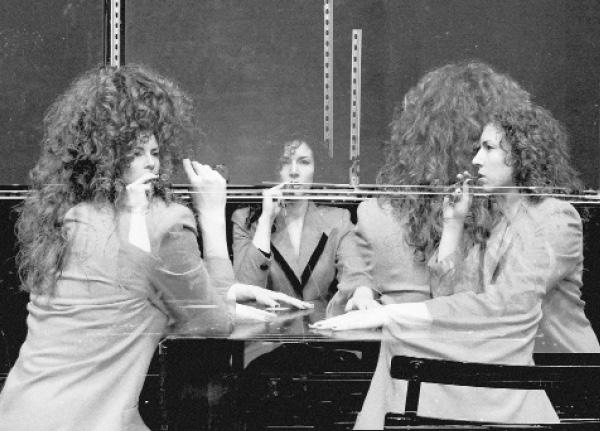
READING FOUNTAIN: A LECTURE PERFORMANCE IN TWO PARTS
first performed on December 9, 2017
Royal Academy of Arts, London, UK
performed once in 2017
SOPHIE SEITA
Cambridge, UK
146336421s146336421t146336421s14633642131463364211146336421@146336421c146336421a146336421m146336421.146336421a146336421c146336421.146336421u146336421k
sophieseita.com
READING FOUNTAIN: A LECTURE PERFORMANCE IN TWO PARTS
SOPHIE SEITA
When is a copy a commentary? This lecture performance was commissioned for the Royal Academy of Arts latest event “Rrose Sélavy’s Dada Extravaganza.” Taking as its starting point the centenary of Duchamp’s (or rather: R. Mutt’s) rejected Fountain, my performance proposed to “see” the work differently when “read” in the context of Duchamp’s co-edited magazine The Blind Man, where it appeared as a photograph by Alfred Stieglitz in 1917. The script meditated on fountains and fountain pens, portraits and replicas, women and bird cages, sequences and consequences. My performing persona echoed the image of the “reading woman” (in a dressing gown, draped over a sofa)—a common painterly trope and an obsession for philosophers and writers alike as an epitome for “attention.” My set consisted of a sofa, an arm chair, an empty golden picture frame, and a pedestal on which I placed a heart-shaped bar of soap in homage to Duchamp’s co-editor Beatrice Wood, who exhibited her semi-ready-made Un peut [sic] d’eau dans du savon also in 1917.
My impetus was to rectify a particular historical account and hagiography around Duchamp and to take seriously the question of how Fountain’s conceptual stunt and its social and cultural context can do some work for us aesthetically and politically today. This was less about “relevance” than about a different understanding of contemporaneity (something I’ve called a “movable contemporaneity” elsewhere). How materials that are historical—both mine and not mine—can have an afterlife (or multiple lives) is something that’s been preoccupying me for a while now. Consequently, the performance also reflected on reading as interpreting, performance as research, and how we make art history beyond major exhibitions dedicated to the big daddies of Dada and Surrealism. One challenge was how to present such experimental work to an audience primed for entertainment, dressed as Surrealist paintings and taking their plastic lobsters for a walk.
I had initially been asked to perform the same piece twice, but—not wanting to be the replica I addressed in my performance—I decided instead to make seriality, copying, and re-reading an integral element of my script, to create two parts that worked independently and in conjunction. The script included material from my piece 3,4 (2013), copied to serve a new function, and the performance concluded with me blindfolding myself, not-seeing my video Objects I Cannot Touch (2014) play in the background.